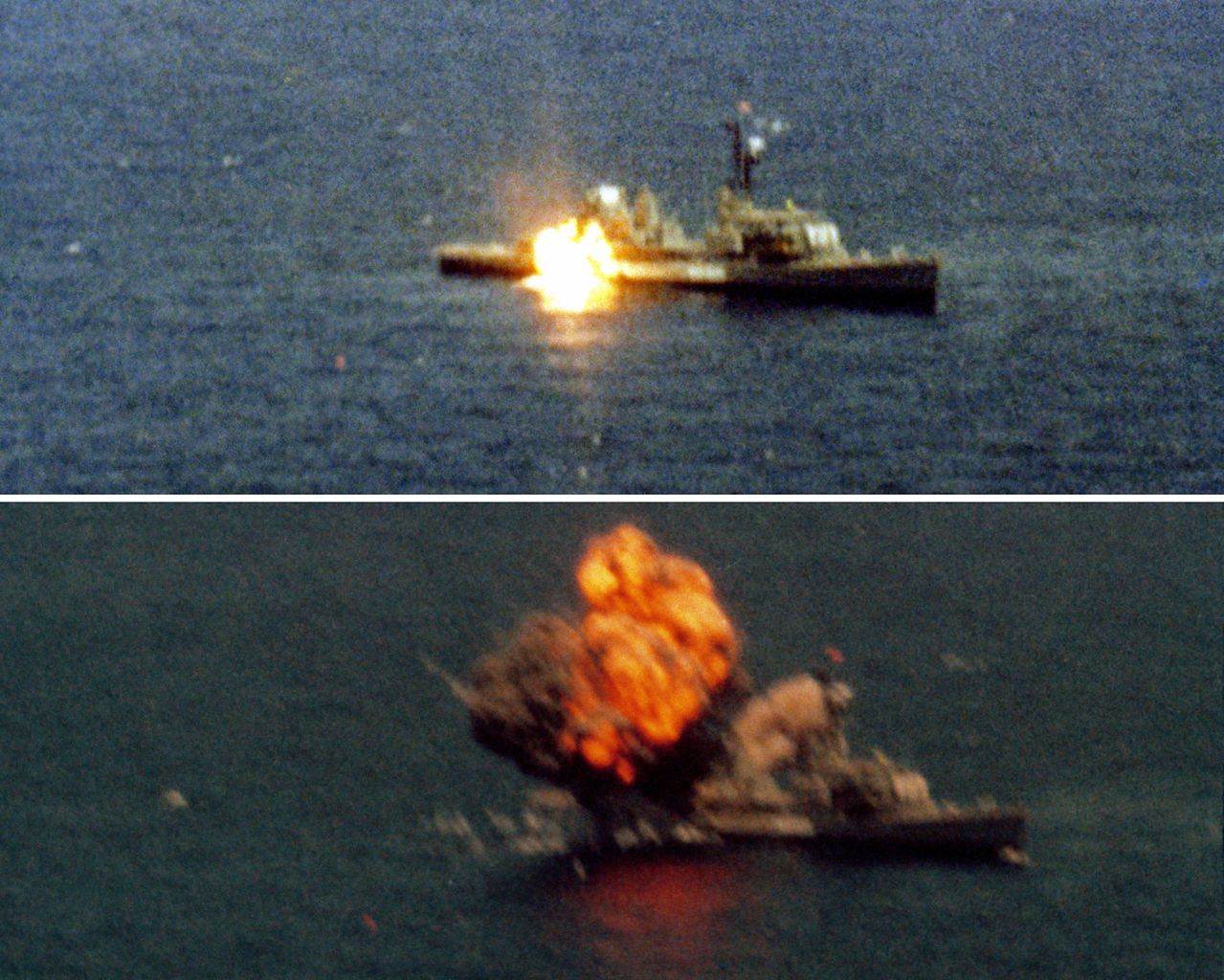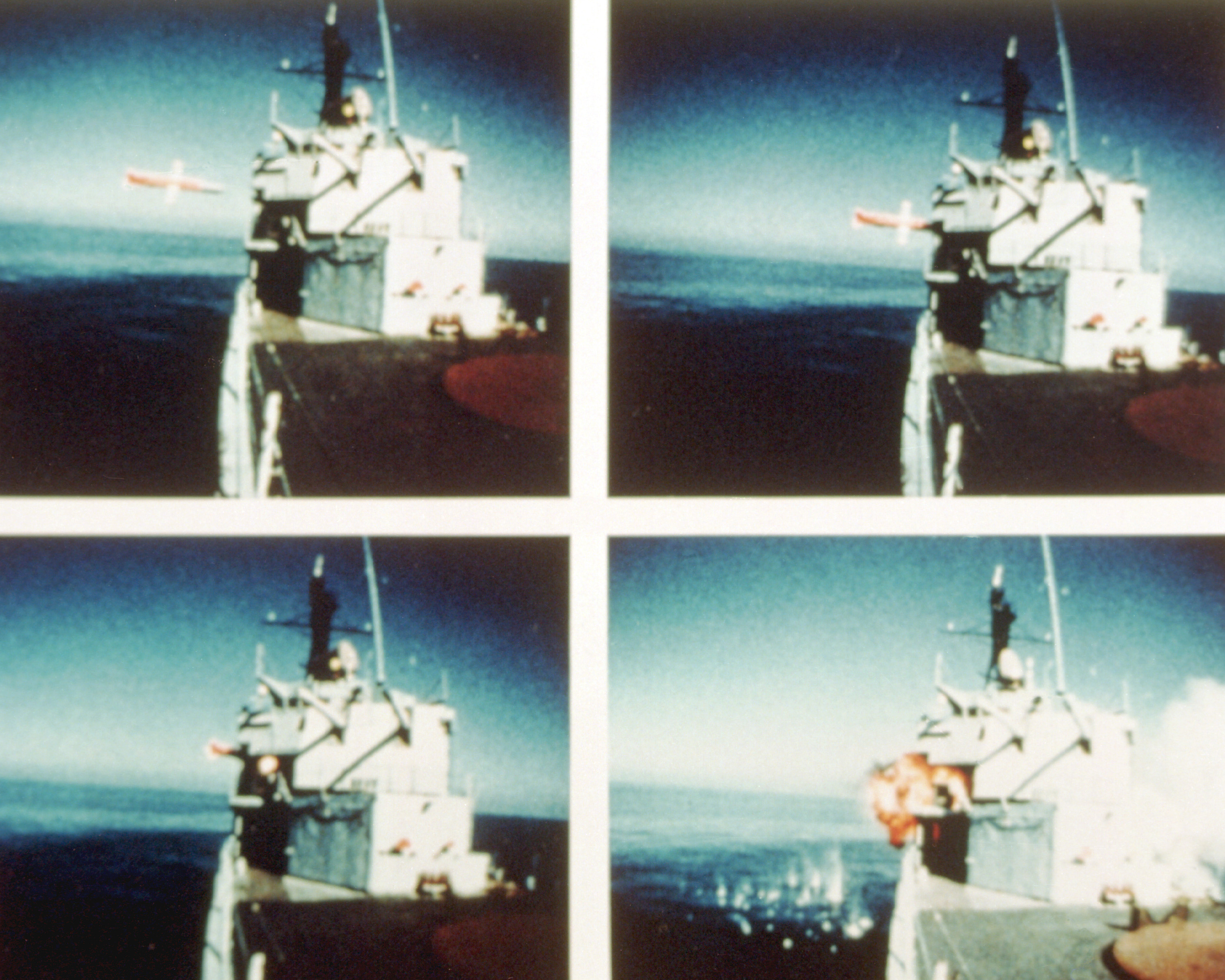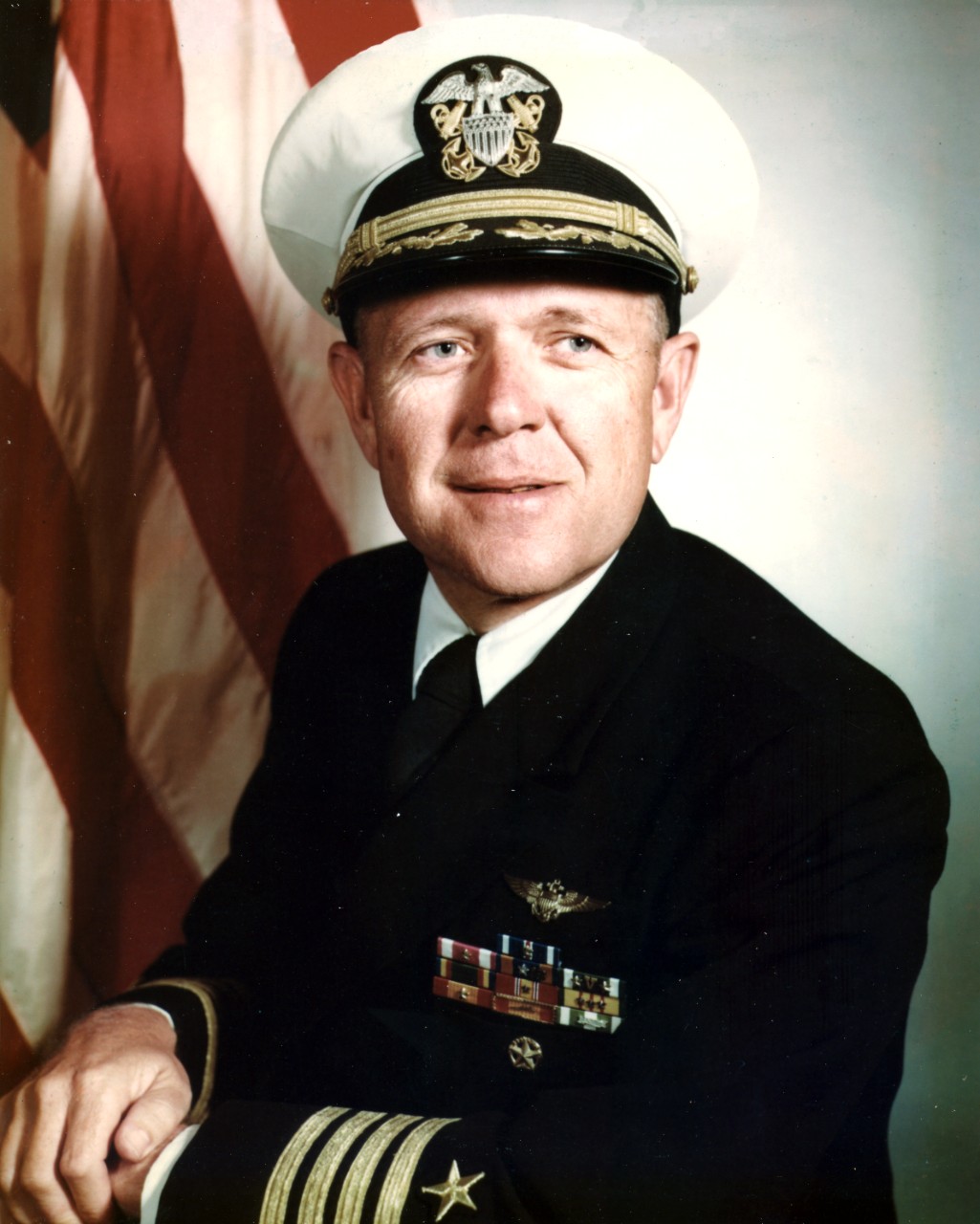The US Navy's Tomahawk cruise missile has revolutionized naval warfare over the last four decades. It has given surface ships and submarines the ability to reach targets far inland, the sort of firepower that was previously limited to aircraft carriers. Tomahawk was originally developed in the late 70s as a nuclear cruise missile, although it quickly spawned a number of variants with conventional warheads. The most famous are the land-attack versions used in numerous conflicts since 1991, but the first conventional Tomahawk was intended for a very different target.

A TASM is tested on the retired destroyer Agerholm
The growth of the Soviet Navy inspired the USN to look into ways of increasing the anti-ship firepower of the surface fleet, and the nascent Tomahawk missile provided the perfect platform. By replacing the W80 with a 1,000 lb conventional warhead taken from the AGM-12B Bullpup, and fitting a guidance system derived from the Harpoon missile, the USN could produce a long-range anti-ship missile at a low cost, which became known as TASM (Tomahawk Anti-Ship Missile). The problem was targeting. Ranges of 250 nm or more were being discussed, and no shipboard sensor was capable of actually finding and identifying targets at that range, or of updating the missile in flight. The Soviets had solved the problem by using aircraft to spot the targets and pass updates to the missile after launch, but American submarine doctrine ruled this out.
One option was to create a new, specialized targeting system, probably space-based. This would be tremendously expensive, and some naval officers offered an alternative. They believed that the information required for targeting was already being collected by the navy's various surveillance systems, and that with improvements in computers and communications, they could collect it and send it to the firing platform before it became stale. This was harder than it sounded. New computers would need to be built to correlate data from ocean surveillance satellites, maritime patrol aircraft, and direction-finders, providing a picture of all traffic on the ocean. Many of these methods didn't report continuously, and tracks would be dead reckoned with estimated course and speed. The entire thing would be relayed by satellite link to the firing platform, who would plan the flight of the missile to maximize the chance that it would see the target, and not any innocent merchant ships. The efforts to build this "kill chain" were reasonably successful, with delays in data falling from the several hours typical in the early 70s to usually less than an hour between sensor and shooter in the operational system.1

A Tu-95RT Bear, a vital element of the Soviet missile targeting system
While these efforts were impressive, they weren't enough to solve the targeting problems on their own. There were two other major components to the TASM targeting system. To account for some of the error, the missile would fly a search pattern designed to give its seeker the best chance of picking up the target. The need to fly this pattern meant that the effective range was approximately 250 nm, as opposed to the 450 nm aerodynamic range of the missile.2 But this raised another problem. If the missile attacked the first ship it saw, there was a good chance it would waste itself on the wrong ship, either by picking the wrong target out of a battlegroup or by simply hitting an uninvolved vessel. The obvious way to solve this was an ESM system set to look for radar emissions characteristic of the desired target.3 This was obviously contingent on the target radiating, but ships tend to do that when they pick up incoming missiles.

Another view of the Agerholm test
TASM's effectiveness was controversial. During one simulation in the 80s, out of 139 missiles fired, only 17 hit the target, 53 hit other enemy ships and eight hit neutral ships. Half the missiles picking up enemy ships is not a bad performance at all, although it fell well short of the Navy's goals of 90% hitting the original target. This led to great dissatisfaction with the system, although others pointed out Tomahawk could still be a powerful weapon. The chance of being attacked at any time, from enemies well beyond the horizon who could launch missiles based entirely on passive information, would have had a major psychological effect on the Soviet Navy. The disruptive effect of the weapon might well have vastly outweighed its practical effects, although with the end of the Cold War, the Navy was quick to discard it, with the missiles being converted to conventional land-attack models.

Jerry O. Tuttle, the chief architect of JOTS
In operation, the systems developed for TASM targeting proved more useful than the missile itself. During the Persian Gulf War, enforcement of the Coalition blockade against Saddam was enabled by this same data. Instead of having to check every ship individually, ships and aircraft could be easily vectored onto suspicious vessels, greatly cutting down on the number of inspections and boarding parties required. Terminals for the so-called Joint Operational Tactical System (JOTS) were mass-produced and placed aboard the ships and aircraft of coalition members who normally had no reason to participate in the USN's networked systems. The sea surveillance system was a tremendous success, giving the allied navies the confidence to board ships loaded with pregnant women and baby food, and look underneath to find "other children's toys, such as 155mm artillery shells for Saddam Hussein's army."4
TASM also paved the way for later conventional Tomahawk versions. The idea of mating the warhead from a TASM to the guidance system of a TLAM-N was fairly obvious. As soon as the so-called "Block I" missiles, TLAM-N and TASM, were in service, the Navy turned its attention towards building just such a weapon. We'll look at it next time.
1 There were attempts to make use of the towed sonar that most ships and submarines carried as an "under the horizon" sensor. Targeting using data from the Outboard ESM system carried by most American destroyers was also investigated. ⇑
2 The fall in range compared to the TLAM-N was mostly due to the heavier warhead displacing fuel. ⇑
3 Some reports indicate that this receiver was hardwired to look for the heightfinders deployed on the Moskva class helicopter carriers, an extremely odd choice given that only two of those ships were built, and they were hardly the highest-value targets around. ⇑
4 Phrasing from Norman Friedman's Network-Centric Warfare, which provided most of the details on the targeting systems. ⇑

Comments
I'm assuming this is some radio silence rule?
Pretty much. The US emphasizes stealth, which precludes the kind of coordination you'd need for a direct sensor. Note that the Soviets did use them, one of the main reasons it took them so long to build an SSGN that could fire underwater.
Typo: hardwired to look for the heighfinders s.b height finders?
Nope. Heightfinder is correct for a radar designed to find altitudes.
@bean: Ctrl-f "heighfinders". Unless I misunderstand your response to The Fatherly One, footnote 3 is missing a t.
Oops. Fixed now.